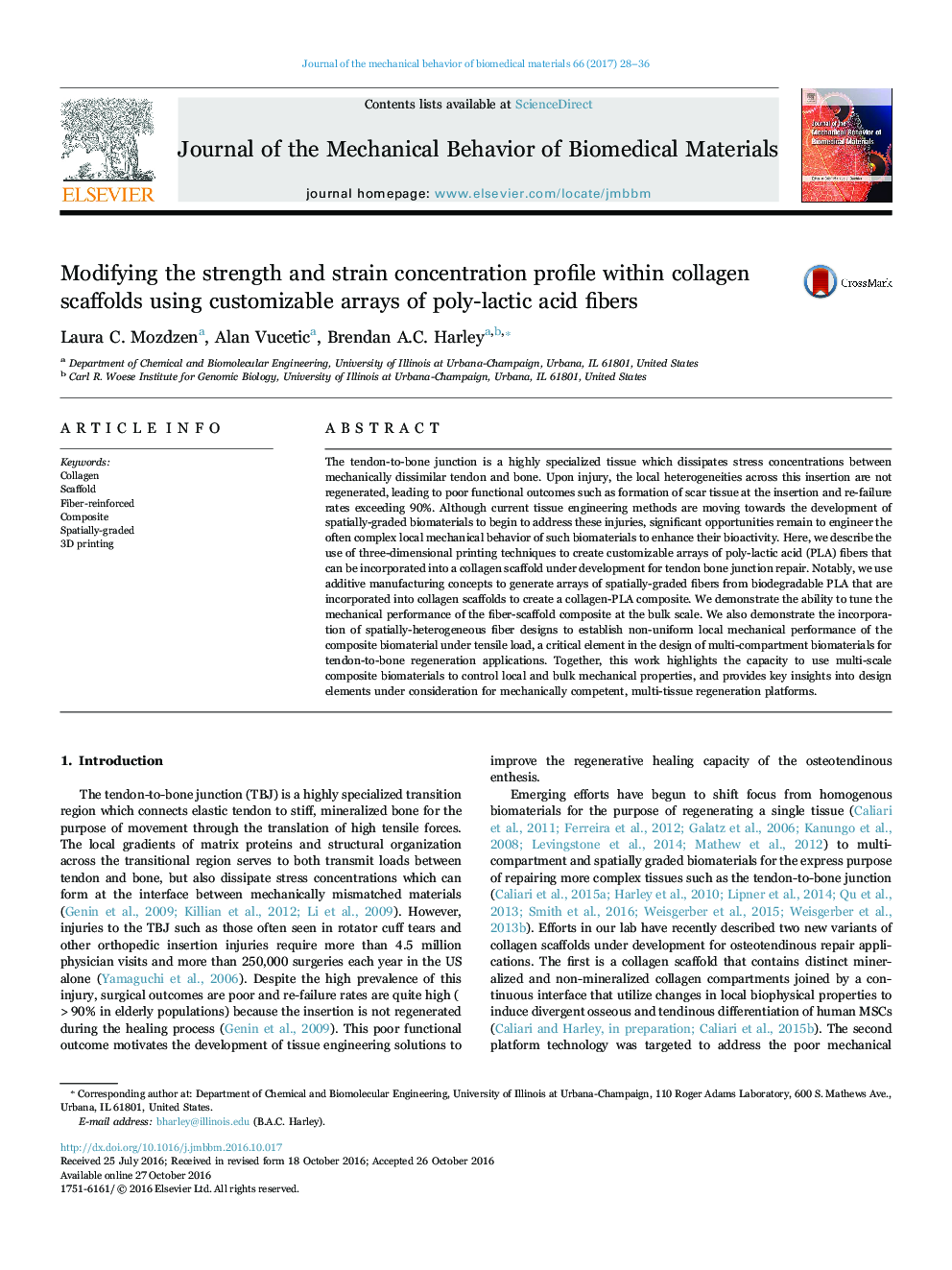| Article ID | Journal | Published Year | Pages | File Type |
|---|---|---|---|---|
| 5020679 | Journal of the Mechanical Behavior of Biomedical Materials | 2017 | 9 Pages |
Abstract
The tendon-to-bone junction is a highly specialized tissue which dissipates stress concentrations between mechanically dissimilar tendon and bone. Upon injury, the local heterogeneities across this insertion are not regenerated, leading to poor functional outcomes such as formation of scar tissue at the insertion and re-failure rates exceeding 90%. Although current tissue engineering methods are moving towards the development of spatially-graded biomaterials to begin to address these injuries, significant opportunities remain to engineer the often complex local mechanical behavior of such biomaterials to enhance their bioactivity. Here, we describe the use of three-dimensional printing techniques to create customizable arrays of poly-lactic acid (PLA) fibers that can be incorporated into a collagen scaffold under development for tendon bone junction repair. Notably, we use additive manufacturing concepts to generate arrays of spatially-graded fibers from biodegradable PLA that are incorporated into collagen scaffolds to create a collagen-PLA composite. We demonstrate the ability to tune the mechanical performance of the fiber-scaffold composite at the bulk scale. We also demonstrate the incorporation of spatially-heterogeneous fiber designs to establish non-uniform local mechanical performance of the composite biomaterial under tensile load, a critical element in the design of multi-compartment biomaterials for tendon-to-bone regeneration applications. Together, this work highlights the capacity to use multi-scale composite biomaterials to control local and bulk mechanical properties, and provides key insights into design elements under consideration for mechanically competent, multi-tissue regeneration platforms.
Related Topics
Physical Sciences and Engineering
Engineering
Biomedical Engineering
Authors
Laura C. Mozdzen, Alan Vucetic, Brendan A.C. Harley,
